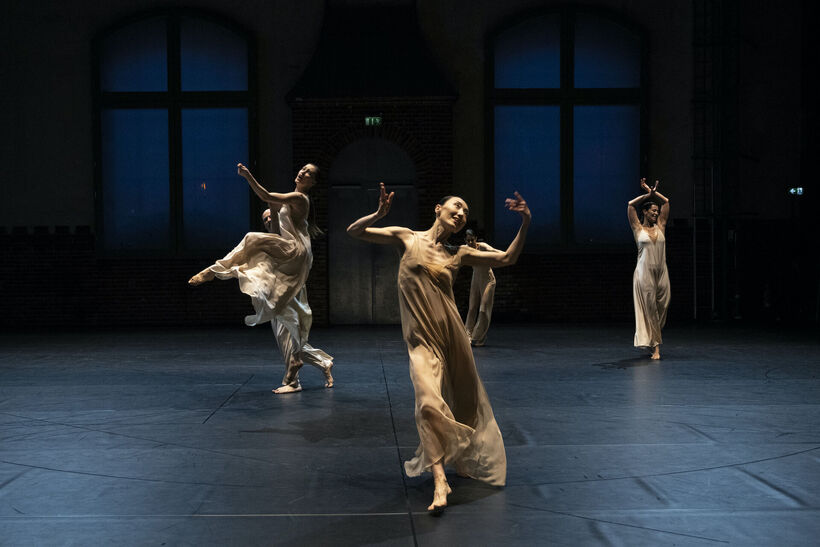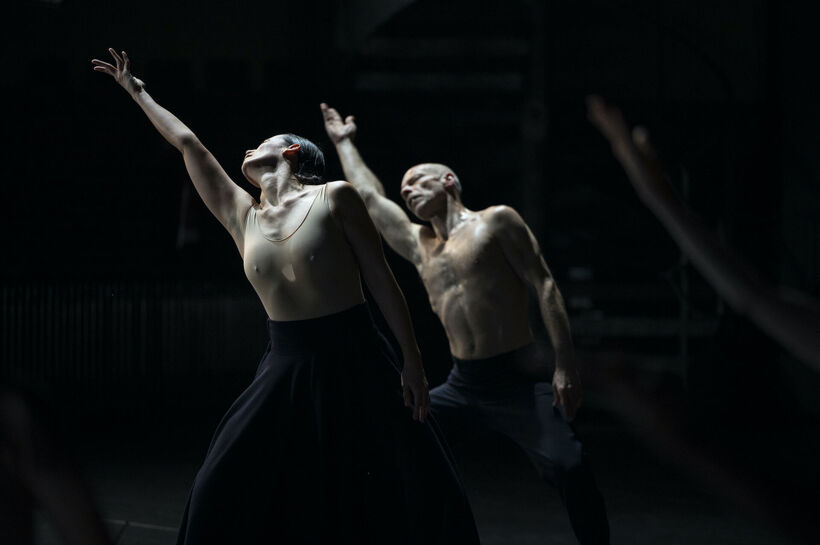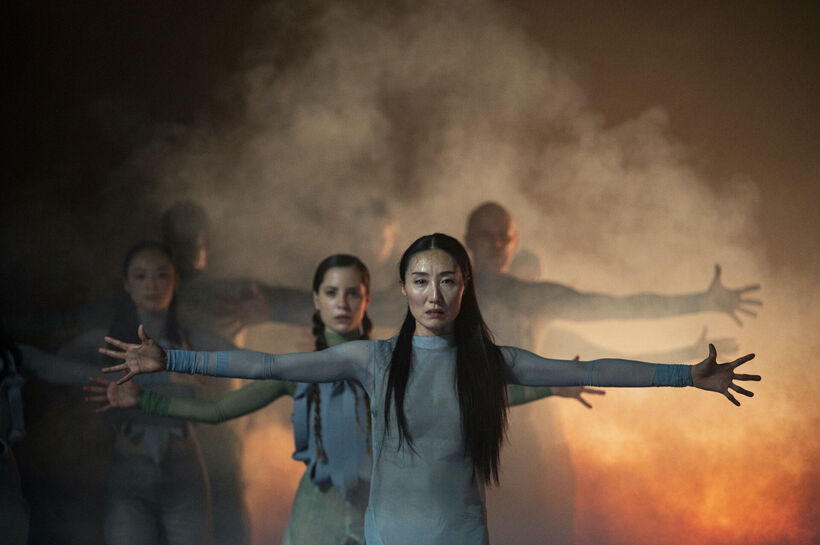Beethoven 7 – Sasha Waltz & Guests Present an Evening of Contrasts
Sasha Waltz, often dubbed Germany’s most important choreographer since Pina Bausch, is known for her versatile work that includes site-specific pieces, directing operas, and leading Staatsballett Berlin for one theatre season. The dance evening Beethoven 7, choreographed for her own company Sasha Waltz & Guests, also started out as a site-specific project but eventually found its home in theatres. But before she gave us Beethoven’s universally loved classic, the choreographer confronted her audience with a contemporary musical piece that – according to its title – celebrates similar values to the great masterpiece, and yet couldn’t be more distinct: Diego Noguera’s Freedom/Extasis.
Chilean-born, Berlin-based Noguera composed electronic sounds for the piece which, from the start, resembled unsettling industrial noise. Things became even more overwhelming as, slowly but surely, the volume took over the entire auditorium. The earplugs handed out before the performance were not much help when not only the floor and the chairs, but also our bodies started quivering and vibrating from the excessive force of the soundscape. When you feel uncomfortable, your senses recoil, and you can only focus on that particular feeling that is torturing you. So, while I saw the dancers – covered in fog and strange headpieces – on the stage, I saw how their slow, fumbling movements increased in urgency as the music became ever more violent, I didn’t really see them, and I definitely could not concentrate on them. Many people left during the piece. I, once again, felt the need to play the good dance critic and stay. That Noguera’s composition needs space is clear. That it needs dance or even an audience – of that I’m not so sure.

After the interval, we return to melodies that are more palatable for the audience, and yet no less challenging for the dance creator. One of the first choreographers to use concert music (rather than music specifically written for a dance piece) was the American modern dance pioneer Isadora Duncan. She certainly wasn’t the only one to break this taboo around the turn of the 20th century, but is definitely the most widely known and the most notorious. And while audiences adored her, critics often judged her harshly for abusing the work of great musical masters – dance was considered a rather lowly art form at the time. The outrage was especially harsh when Duncan came to Germany. Her adversaries could forgive her for dancing to Chopin (at least he had composed some dance music), but not to Beethoven. So loud and forceful was the protest in the press that Duncan decided to change her programme in one of the German cities and leave Beethoven out.
Of course, nowadays, it is not unusual – and not frowned upon – to choreograph to concert music. For example, could you imagine Jiří Kylián’s oeuvre without all those fantastic Mozart pieces? But not everyone is as adept as Kylián, and it still takes a very good choreographer to deliver more than just a lousy illustration of the music when it comes to the greatest classical compositions. Many try, some fail, some succeed, some excel.

Sasha Waltz is among those who excel – her rendition of Beethoven’s 7th Symphony is a joyful, often witty, exciting piece that manages to keep up with the complexity of the music throughout all four movements. Two of those four movements were originally choreographed for a live broadcast by the TV channel ARTE from Delphi, Greece, during the pandemic, and Waltz later decided to complete the work in the theatre. However, while Waltz moves her ensemble around the stage in many creative ways, making good use of the whole space, one can easily imagine that the sight must have been even more majestic against the ancient scenery. In the playful first movement, the dancers are clad in loose, tunic-like robes, running, jumping, and whirling around the stage like kids in a schoolyard. This reminds me once again of Isadora Duncan and her intentions to liberate the body and elevate dance. Sasha Waltz’s approach to this celebratory movement has a similar effect on me. The choreographer also fills the silences between the movements, which makes it even more plain that dance is not only here to serve the music.

The sombre second movement begins with a march that could be a funeral rite, until couples and smaller groups break away in step with the progression of the music. The choreography also becomes more colourful. At one point, a woman appears on stage with an enormous flag that she softly waves over the crowd – a mesmerising dance in its own right. The 7th Symphony was written during the time of European revolutions against Napoleon’s rule, and is therefore loaded with political and ideological content. On Waltz’s stage, the flag is made of sparkling transparent fabric, which gives space for a more universal interpretation. In the last, powerful movement the dancers resemble athletes or fighters as they bring the symphony to an energetic end. Beethoven’s music might not need dance, but Sasha Waltz proves that it can be enriched by it.
Written from the performance of the 25 November 2023 in Festspielhaus St. Pölten, Austria
Beethoven 7
Concept and choreography: Sasha Waltz
Music: Ludwig van Beethoven, Diego Noguera
Costume: Bernd Skodzig, Federico Polucci
Lighting: Martin Hauk, Jörg Bittner
Dramaturgy: Jochen Sandig, Christopher Drum
Repetition: Yael Schnell
Dance and choreography: Clémentine Deluy, Rosa Dicuonzo, Edivaldo Ernesto, Tian Gao, Eva Georgitsopoulou, Hwanhee Hwang, Annapaola Leso, Jaan Männima, Sean Nederlof, Virgis Puodziunas, Sasa Queliz, Zaratiana Randrianantenaina, Orlando Rodriguez



